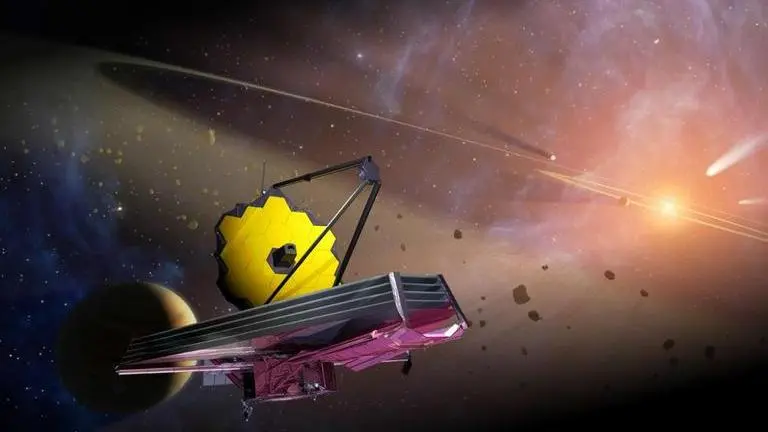Updated 26 January 2023 at 22:25 IST
WATCH: Webb telescope clocks in another first, observes icy body eclipsing a star
The Webb telescope recently observed an icy object lying between the planets Saturn and Uranus eclipsing a star. It also detected signs of crystalline water.
- Science News
- 3 min read

In a series of many firsts, the James Webb Space Telescope (JWST) has clocked in another one, this time in the form of a stellar occultation. The world’s most powerful observatory recently set its eyes on a small, icy body named Chiralko which is located around 3.5 billion km beyond the planet of Saturn.
NASA says that this icy body has two rings at a distance of 400 km from the centre and it measures just 250 km in diameter making it approximately 51 times smaller than Earth.
Peek-a-boo 🫣
— NASA Webb Telescope (@NASAWebb) January 25, 2023
This is Webb's 1st look at a stellar occultation (when a foreground object passes in front of a star from our viewpoint on Earth). The moving object here is Chariklo, a small icy body between Saturn and Uranus, and the star is at the center. https://t.co/OOsXZ3z5sq pic.twitter.com/EAmLSaEyNt
NASA explains Webb telescope's new milestone
This is the first time the Webb telescope has observed an occultation, the phenomenon when a foreground object passes in front of a star from our viewpoint on Earth. As the tweet above shows, Chiralko between Saturn and Uranus transits right through the star with quite a mouthful name-- Gaia DR3 6873519665992128512. Using the JWST's Near-Infrared Camera (NIRCam), scientists marked the tell-tale dips in brightness of the said star indicating an occultation had taken place.
Chariklo has two thin rings — the first rings ever detected (in 2013) around a small Solar System object. When Webb observed the occultation, scientists measured dips in the brightness of the star. These dips corresponded exactly as predicted to the shadows of Chariklo’s rings. pic.twitter.com/sqH08v1lOB
— NASA Webb Telescope (@NASAWebb) January 25, 2023
According to NASA, astronomer Felipe Braga-Ribas and collaborators discovered in 2013 that Chariklo hosts a system of two thin rings, which are expected only around large planets such as Jupiter and Neptune. "The astronomers had been watching a star as Chariklo passed in front of it, blocking the starlight as they had predicted. To their surprise, the star blinked off and on again twice before disappearing behind Chariklo, and double-blinked again after the star reemerged," NASA said in an official statement. The two dips resulted from the occultation by the two thin rings, astronomers found.
Advertisement
Scientists believe that the rings are probably composed of small particles of water ice mixed with dark material, debris from an icy body that collided with Chariklo in the past. Notably, this is the first evidence of clear signatures of crystalline water-ice in the Chariklo system. While most of this data is from the icy body and not the rings, NASA says that future observations would help accurately determine what the rings are made of. Astronomers are also happy as detecting occultations might be a new way of using Webb to explore solar system objects.
Published By : Harsh Vardhan
Published On: 26 January 2023 at 22:27 IST
